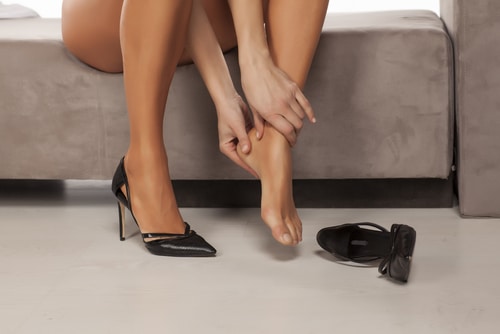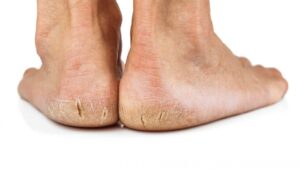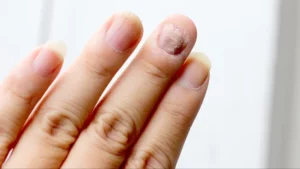Having pains and discomforts in the feet are not uncommon when you are spending hours on end standing at a counter or walking around as you go about your day. Nevertheless, discomfort or pain at the balls of your feet may suggest that something more serious is going on, especially when said symptoms refuses to go away. If you are feeling a tingling pin and needle sensation or that nagging feeling that you have a stone caught in your shoe, you may have a condition called “Morton’s Neuroma“.
What causes Morton’s Neuroma?
The condition establishes on the bottom of the foot and impacts the ball and the toes. The foot has many nerves that help you to stay balanced and prevent falls. When one of these nerves going through the ball of the foot becomes damaged or inflamed, severe leg pain may set in.
In most cases, Morton’s Neuroma can be a temporary problem linked to a particular activity or a set of shoes you might wear routinely. We are not sure what exactly triggers Neuromas, but it appears to develop as an outcome of irritation, pressure or injury to one of the nerves surrounding the toes.
Women are more likely to get Morton’s Neuroma than men at a ratio of 3 to 4. It can happen at any age although it frequently affects people between the ages of 40 to 50 years old.
You would do well to see a podiatrist if you are experiencing any of the following symptoms:
- Plantar (sole) pain
- Increased pain when standing, walking or wearing shoe
- Feeling numb and discomfort that radiates into the toes
- Pins and needles sensation in the foot
- Cramping sensation on the base of the foot
- leg discomfort at night
Physical therapy and other treatment options for Neuromas
Are you worried that you may have Morton’s Neuroma? No need to fret, there are some basic treatments available, and in most cases, it is all that is ever required to reverse the condition.
Such treatments include:
- Lifestyle changes such as altering shoes and staying off your feet as much as possible
- Wearing Orthotics to redistribute weight off the painful area
- Physical therapy exercises (calf-stretching)
- Wearing Orthopaedist shoe inserts to supply much better assistance for your foot and can eliminate pressure around the affected area.
- Use shoes with lots of space for the toes to move, low heels, and laces or buckles that enable width modification.
- Avoid wearing shoes with heels higher than 2 inches as it places excessive pressure on the forefoot.
- Rest your feet; apply an ice pack to dull the pain and mitigate discomfort
- Wear overnight stretch socks
- In severe cases, cortisone injections may be necessary










